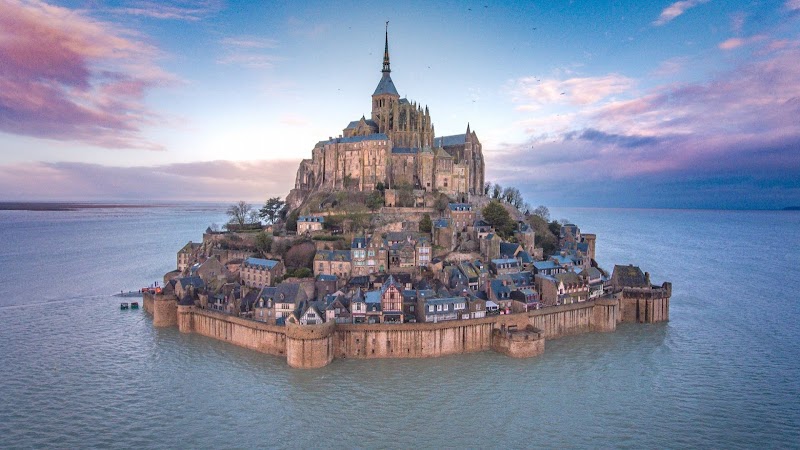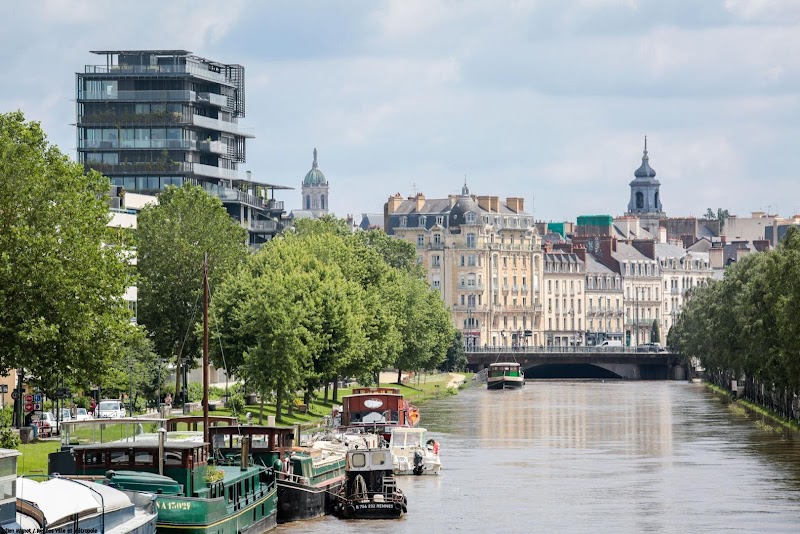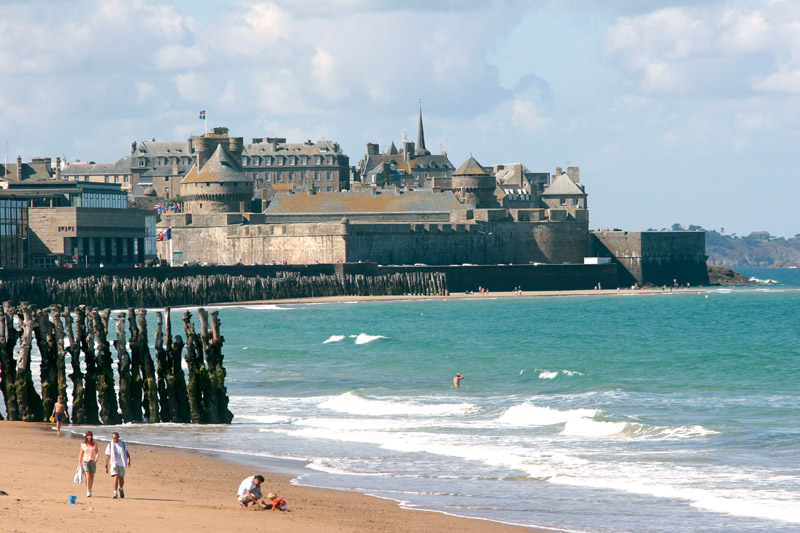Welcome to the Enchanting Region of Brittany!
Have you ever dreamt of wandering along a captivating stretch of coastal beauty that spans over 2,900 kilometers? If so, Brittany, a region in northwestern France, is your ideal destination. Known for its unique blend of land and sea, Brittany offers a wide range of unforgettable experiences. From the rugged cliffs of Cap Fréhel to the ancient standing stones of Carnac, the region's diverse landscapes and rich history create a mesmerizing backdrop for an idyllic getaway.
Exploring Brittany is like stepping into a fairytale, where every turn unveils a new enchanting sight. To help you navigate this enchanting region, we recommend using a comprehensive tourist map of France. The map will be your compass as you journey across Brittany, guiding you to the region's most charming villages and breathtaking landscapes. So, get ready for an unforgettable adventure!
Booking.comDiscover the Hidden Treasures of Brittany
With awe-inspiring natural landscapes and a rich cultural heritage, Brittany is a gateway to the heart of Northwestern France. Whether you're a history enthusiast, a nature lover, or a foodie, Brittany is sure to captivate your senses and leave you yearning for more. To help plan your journey, we have compiled some of the top attractions that make Brittany such a unique gem.
Must-Visit Attractions in Brittany
- Quimper: The medieval town
- Mont Saint-Michel: The abbey on the island
- Saint-Malo: The walled city by the sea
- Rennes: The vibrant capital of Brittany
- The Pink Granite Coast: A natural spectacle
- Brocéliande Forest: The legendary woods
- Nantes: The city of art and history
Experience the Medieval Charm of Quimper
Quimper, the ancient capital of Cornouaille, is a city drenched in history. Walking the cobblestone streets of Quimper feels akin to stepping back in time, where timber-framed houses and Gothic cathedrals paint a vivid picture of medieval grandeur. The city is also renowned for its world-class pottery, Quimper Faience. Make sure you visit the Musée de la Faïence to learn about this art form that has been around for over five centuries.
The Majestic Mont Saint-Michel
Situated just a stone's throw away from Brittany, Mont Saint-Michel is a sight that you cannot miss. This island commune, with its formidable abbey, is one of France's most iconic landmarks. At high tide, Mont Saint-Michel seems to majestically rise from the sea, offering a spectacle that's both mystifying and breathtaking. For a more complete experience, follow the tourist map of France and explore the nearby towns of Dol-de-Bretagne and Cancale, both celebrated for their unique charm and gastronomy.
Explore the Walled City of Saint-Malo
Saint-Malo is a city that proudly flaunts its maritime heritage. Its imposing fortifications guard a city teeming with narrow winding streets and tall granite buildings. From the ramparts, you can enjoy stunning views of the sea and nearby islands. Don't miss the chance to sample some fresh seafood at one of the city's many delightful bistros.
Discover the Vibrant Capital: Rennes
The vibrant city of Rennes is a delightful mix of the old and the new. As you wander through the city, you'll discover an intriguing blend of historic half-timbered houses, modern street art, and lush green parks. The Musée de Bretagne offers a fascinating insight into the region's history and culture. Rennes is also known for its lively food markets, offering a taste of Brittany's culinary delights.
Experience the Spectacular Pink Granite Coast
The Pink Granite Coast, or Côte de Granit Rose, is a natural wonder that will leave you breathless. This 30-kilometer stretch of coastline is renowned for its unusual pink-hued rocks, sculpted by the sea into stunning shapes. Don't miss the chance to visit the charming seaside towns of Perros-Guirec and Trégastel, both renowned for their beautiful beaches and picturesque landscapes.
Explore the Legendary Brocéliande Forest
Brocéliande Forest is a place of legend and mystery. This enchanting woodland is steeped in Arthurian legends, filled with mythical landmarks like Merlin's Tomb and the Fountain of Youth. Engage a local guide for a truly immersive experience in this magical forest.
Nantes: A City of Art and History
Although technically not a part of Brittany anymore, Nantes shares a deep historical and cultural connection with the region. This vibrant city is a treasure trove of historical landmarks, fascinating museums, and innovative art installations. Highlights include the Château des ducs de Bretagne, the Machines de l'Île, and the Passage Pommeraye.

Practical Information for Visiting Brittany
Transportation and Mobility
In Brittany, the public transportation system is efficient and widespread, making it easy to travel between cities and towns. The region is well-served by the French railway system, with major stations located in Rennes, Saint-Malo, and Nantes. For more remote areas, local bus services are often the best option.
Additionally, renting a car can provide more flexibility, especially for exploring Brittany's extensive coastline and smaller villages. Ensure you have a valid international driver's license if you're coming from outside the EU.
Schedules and Prices
The majority of museums and landmarks in Brittany open around 10 am and close between 5 to 6 pm. However, these hours can vary depending on the season and the day of the week. Be sure to check the specific times for each site before your visit.
As for prices, admission fees for most attractions range from €5 to €20. Museums often offer discounted rates for students, seniors, and families. If you plan on visiting multiple attractions, consider purchasing a city pass for savings.
Safety Tips
While Brittany is generally safe for visitors, it's always wise to take precautions. Keep an eye on personal belongings in crowded tourist areas and be aware of your surroundings.
When visiting the coast, always check the local tide times. The region's powerful tides can change quickly, and some areas can become inaccessible or dangerous during high tide.
Practical Recommendations
The best time to visit Brittany is during the summer months, from June to September, when the weather is most favorable. However, this is also the busiest season, so be prepared for larger crowds at popular attractions.
If you're traveling on a budget, consider visiting in the shoulder seasons of spring and autumn. During these periods, you'll find lower prices and fewer tourists, while still enjoying pleasant weather.
Last but not least, always have a raincoat or an umbrella at hand. Brittany is known for its changeable weather, and showers can occur even on sunny days.

Frequently Asked Questions
1. What unique culinary experiences does Brittany offer?
Brittany is a paradise for food lovers, offering a unique blend of land and sea on its plates. Renowned for its seafood, with oysters from Cancale and mussels from Mont Saint-Michel Bay being particularly famous, Brittany also offers delicious crêpes and galettes, cider, and traditional butter cookies known as 'palets bretons'. Visit local markets for fresh produce, or try a 'fest-noz' – a traditional Breton feast with music and dancing.
2. Are there any annual festivals or events in Brittany I should not miss?
Brittany's vibrant cultural calendar is filled with events that reflect its rich history and traditions. The Festival Interceltique de Lorient in August is a must-see, showcasing Celtic music and culture from around the world. You'll also love the Fête des Remparts in Dinan, a medieval festival held every other July. And for music lovers, the Vieilles Charrues Festival in Carhaix is one of France's largest music events.
3. How can I explore the islands off the coast of Brittany?
Brittany's offshore islands offer an enchanting escape from the mainland. Visit the Îles Glénan, a small archipelago known for its sailing schools and sublime beaches, or the Île de Bréhat, a car-free paradise of flowers. Boat services run regularly from various points along the coast, but remember to check schedules in advance as they can vary depending on the season and weather conditions.
4. What language is spoken in Brittany? Do I need to know French?
While French is the main language spoken in Brittany, you might also hear Breton, a Celtic language that has experienced a revival in recent decades. Many road signs are in both French and Breton, and some locals, especially in rural areas, are bilingual. However, most people speak English, especially in tourist areas, so you should have no problems if you don't speak French.
5. Does Brittany have any unique customs or traditions?
Brittany's Celtic roots are evident in its many unique customs and traditions. These include the 'fest-noz', traditional night festivals with Breton music and dance, and the wearing of traditional Breton costumes at festivals and events. The region is also known for its unique religious processions called 'pardons', which take place annually in various towns and villages.
6. What are some lesser-known attractions in Brittany that are worth visiting?
While Brittany's major attractions like Mont Saint-Michel and the Pink Granite Coast are well-known, the region also boasts plenty of hidden gems that offer a different perspective on Breton culture and history. The picturesque village of Locronan, with its well-preserved 17th-century architecture, and the Pointe du Raz, a stunning cape jutting out into the sea, are both worth a visit. For history enthusiasts, the ancient Roman ruins in Corseul offer a fascinating glimpse into Brittany's past.

